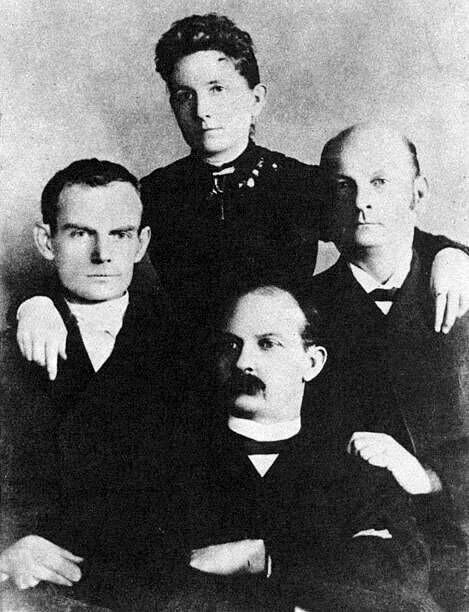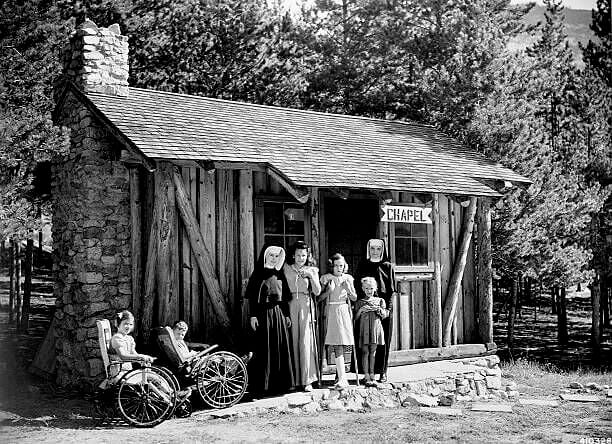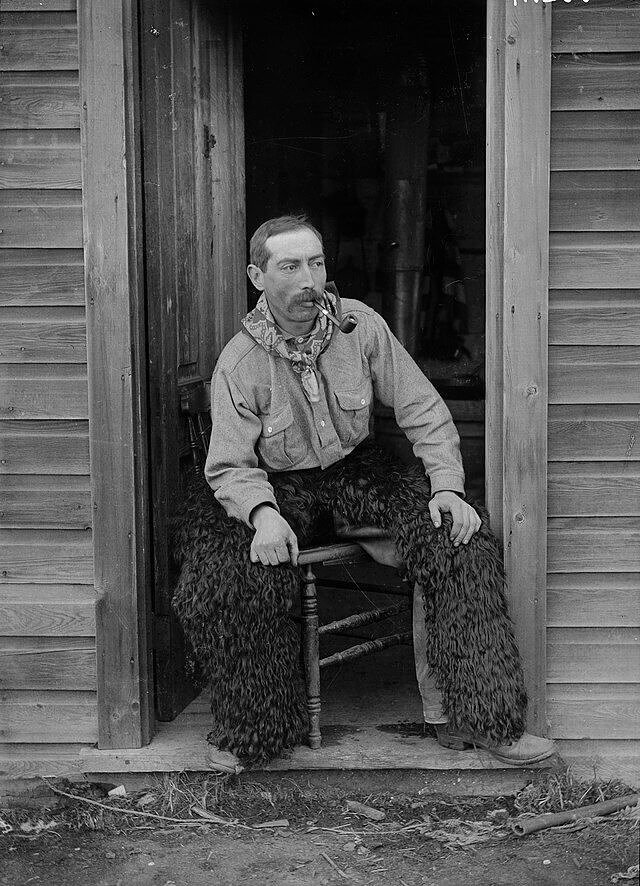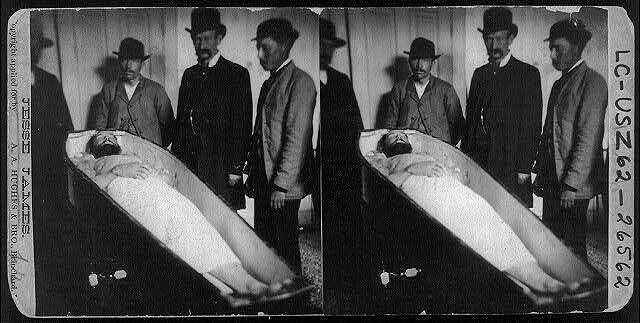We’re all familiar with the Wild West, also known as the Old West and American Frontier. Some of us may have even grown up playing games that involved dressing up as cowboys (or girls). But how much of this lifestyle are we familiar with? Living during the time of the American Frontier was not for the faint-hearted. Here are some fascinating facts and strange lifestyle traits.
The Dirty Habit of Spitting Tobacco
Firstly, it wasn’t uncommon for men in the Old West to chew lazily on tobacco, and then spit once the build-up of saliva becomes too much to fit in their mouths.
However, what many people don’t know is that men would spit directly on the floor of the saloon, in spitoons that lined the bar. These spitoons were filled with sawdust which was a health risk in their own right.
Various Insects Were a Menace in Wild West Society
Public spaces in the Old West were crawling with a variety of different critters. For example, beds of the average person were known to be made from straw and hay. While this is more comfortable than sleeping on the floor, the hygiene was far from being up to scratch. These beds were seldom cleaned and attracted all sorts of bugs such as “seam squirrels” and lice.
Insects would contaminate food with their larva, leaving a nasty surprise for unsuspecting people. Mosquitos were also an issue, making their home in poorly insulated structures. It seems that bandits were not the only evil that the cowboys had to worry about.
“Soap” Was a Very Loose Term - And Didn’t Offer Much Value
Today, most people enjoy a warm shower either first thing in the morning (or the last thing before bed). Regardless of your washing routine, it will no doubt involve slathering yourself with a choice of sweet-smelling soap. But days in the Wild West were very different. Instead of soap, society used the likes of “soap-weed” which Mexican women used to wash their hair. The substance was made from the yucca plant and had a wonderfully soft and lustrous effect.
Other settlers used “soap” made from animal fat to clean themselves. Unfortunately, the effects of this soap were less luxurious. Instead, it left the skin irritated. Without proper soap as part of the daily routine, body odor became a common issue. On the plus side, this was an acceptable condition, as overly clean pores had a reputation for exposing the skin to germs and diseases.
You Could Tell a Lot By a Woman’s Skin Complexion
Today, a woman’s tan can be a wonderfully attractive feature. But during the peak of the Old West, clear and pale skin complexion was the top desire. If a woman had porcelain skin free of blemishes and freckles - then she was a catch. The middle and upper-class women went to extreme measures to achieve this look, including the use of bleach and staying out of the sun.
Whenever these women did venture outdoors, they made sure to have their bonnet, gloves, and long sleeves handy to protect the melanin in their skin from getting overly excited. There were, of course, women who defied social norms and chose to conform to the cowboy/girl way of life.
Clean Water Wasn’t a Guarantee
Did you know that up to 60% of the adult body is made up of water? As you can imagine, this means that water is critical for our survival. While a lot of things have changed over the centuries, this fact of life hasn’t. However, those living in the Wild West didn’t have access to clean water as needed.
Drinkable water was not easy to come by, and often, dirty water disguised itself as clean. For example, a stream of water could easily have been contaminated by a leaking outhouse. Stagnant water was also undrinkable as it was a breeding ground for insects and often fell in the footpath of horses. The safest bet was collecting rainwater in a cistern - but even this water had a precarious lifespan.
Dust Storms Were a Common Occurrence
During the time of the Wild West, dust storms were the equivalent of a natural disaster with the potential of causing devastation. The storms would arise out of nowhere, and cover entire towns in a thick layer of grime and dust. This was horrid from both a cleanly point of view, as well as adding to the risks of health issues and respiratory diseases.
One young girl named Sarah Raymond Herndon traveled the area in the 1860s and had the following memory to share; “Oh, the dust, the dust; it is terrible. I have never seen it half as bad; it seems to be almost knee-deep in places […] When we stopped, the boys’ faces were a sight; they were covered with all the dust that could stick on.” Unfortunately, this dust could not be cleared away with a simple sweep of the broom.
Outhouses Offered an Unhygienic Experience
A trip to the loo was not always as easy as walking to the next room and politely closing the door behind you. Back then, the “bathroom” was a shed that was built to cover a hole in the ground. These fecal depositories were built close to the home and used until the hole became full, in which case another outhouse would be moved to another spot.
It wasn’t only the unhygienic structure that was off-putting, but the smell also attracted insects and served as a breeding ground for diseases. Without the technological advancement of toilet paper, the experience of going to the toilet was worsened by people using leaves, corn cobs, and grass to clean themselves after relief.
Styling One’s Hair Didn't Involve the Best Hygiene Practices
While the societies of the Old West were not particularly hygienic, they sure were creative. People could get quite inventive when it came to washing their hair. Some used the previously mentioned soap-weed, while others even went as far as disinfecting their hair with whiskey.
The whiskey was mixed with castor oil and used to wash the ladies' hair. The substance was then washed out with rainwater or softened with borax, a sodium-based chemical compound. And although they may not have had the likes of a hair straightener or curlers, vanity was still a popular focus. Some women even used heated pencils as basic curlers to style their hair.
Women Set the Bar of Hygiene Higher Than the Men
Stereotypically, women have always been more focused on their image than men. At least, that’s how the media has presented it. This stigma has held ever since the times of the Old West when it was known that women held a much higher standard of hygiene than men. Men of the West spent a lot of time outdoors in the dusty climate and would often go days without a bath.
When the men did eventually dip their toes into a body of water, it was rudimentary at best. However, women would spend a lot more time and effort in maintaining better hygiene - even if it was just washing their hands and face.
Sharing Is Caring - But It’s Not Hygienic
Think back to when you last went out for a drink. Chances are that you headed over the hottest bar, sat down at a comfortable bar stool, and looked at a menu of tasty indulgences. Bars in the Wild West were incredibly different. For starters, there were no stools to grab a seat. Instead, the bar had rails to prop up a foot and relax. On the top rail, there were hooks to hold towels.
These towels were intended to keep the space clean by wiping beer from the mouths and beards of the men. In reality, the towels were horrifically unhygienic. The towels would be shared between countless patrons, rarely washed, and provided quick access to various germs and diseases.
Having a Disease Was a Guaranteed Experience
By now, it should be very clear that the Wild West society wasn’t the most sanitary. Between unclean establishments and contaminated resources, it was the perfect breeding ground for germs. And so it didn’t come as a surprise when diseases tore through various settlements. One of the most tragic of these illnesses was cholera - spread through contaminated water and food. Cholera caused devastation for both Native Americans and settlers - no one was immune.
Eventually, it came to a point where it was more unusual to come across a settlement that wasn’t struggling with the outbreak of disease than it was to visit one in a generally healthy state.
The Iconic Kerchief Was Not Only a Fashion Statment
If you’re invited to a Wild West dress-up party, there are a few items that you’ll include in your costume. A cowboy hat, a waistcoat, and most definitely a kerchief or bandana. While kerchiefs are a fashionable accessory today, they were essential throughout the American Frontier.
Kerchiefs were used to keep the dust out of breathing one's nose and mouth, protect skin from the sun (and cold) and hide the faces of outlaws. These valuable kerchiefs are iconically red and can be made of a variety of materials. Bet you didn’t know the true value of the triangular piece of cloth!
A Hairstyle Transformation - For the Men
As mentioned, it wasn’t unusual for men of the West to have long locks and facial hair that added a masculine edge to their appearance. However, at the turn of the 19th century, hygiene products became more readily available and so began the transformation of men’s hairstyles.
With new hair care products bubbling to the surface, men began to understand the hygienic risks of having long (unkempt) hair. It wasn’t long before men started to cut their hair and shave their faces, sporting a clean-cut, smoldering look.
Dental Hygiene Was Well Below Par
Certain attributes can make or break your attraction to someone. Some people are put off by runny noses, others are less fond of hairy chests. Another common turn-off point is bad teeth. Unfortunately for those living in the Old West, dental hygiene was a compromise you’d have to be willing to make.
During that time, it wasn’t common to have toothbrushes, toothpaste, and other oral care products. As a result, many people had rotting teeth and black gaps in their mouths. It also wasn’t uncommon for people to perform their dentistry on themselves - there’s nothing that a bit of alcohol can’t numb!
The Lack of Bathing Introduced Multiple Fungal Infections
Cowboys may have been able to outrun all sorts of wildlife and bandits, but they couldn’t escape the repercussions of an unsanitary lifestyle. It wasn’t unusual for cowboys to go weeks - and sometimes even months - without a proper clean. But cowboys paid the price for wearing the same clothes for days on end and spending hours on the back of a horse. This cost came in the form of fungal infections.
These fungal infections would rear their ugly head in rather unfortunate areas, such as the crotch, buttocks, armpits, and feet. Symptoms would not only be visual but also very unpleasant by itching and burning. The infections had a knock-on effect and would spread as cowboys used their dirty hands to scratch and spread the bacteria.
What Is That Horrible Smell?
The cowboy lifestyle involved many hours on the back of the horse, galloping across the country, dodging bandits. But when their thirst became a bit too much to handle, they would pull into the nearest town and grab a spot at the local bar. But while they may have left their horses tied up outside, they brought the smell of the horse in with them.
The combination of being on top of the horse for hours and the inability to bath regularly meant the smell was difficult to shake off. Unfortunately, this dirty lifestyle meant that a cut or abrasion had a high chance of a highly contagious skin infection. It seems like being a cowboy is not as glamorous as Hollywood makes it out to be.
Venereal Diseases Were as Popular as Skin Infections
Another aspect of the cowboy lifestyle that encouraged the spread of diseases is the loosely intimate love affairs that would regularly happen at saloons and other establishments. Sexually transmitted diseases were spread freely, without much chance of a cure.
“Using protection” was not a common practice, as most people didn’t even know that these diseases and ailments existed - let alone how they spread. For every bit of love that was indulged, it came at the cost of contagion (and an itch or two).
Entry Into Drinking Club Came at a Hefty Cost
Entertainment options were few and far between. There was no ice rink, cinema, or shopping mall to kill time. Instead, cowboys would frequent the saloon and drink themselves silly. The bar became a source of fun where many memories were made - and then subsequently forgotten.
A popular drink of choice was “whiskey” made up of burnt sugar, alcohol, and chewing tobacco. This drink was incredibly powerful and given the nickname “firewater” as cowboys would light it on fire. Another favorite drink was cactus wine, made with a combination of tequila and peyote tea. Both of these drinks packed a punch - and caused many cowboys to throw a punch too. It wasn’t uncommon for bar fights to break out and sometimes even lead to death.
The Diet in the Wild West Wasn’t as Bad as You’d Think
With so many unhealthy lifestyle habits, it’s tough to think that frontier cooking in the Wild West was anything enjoyable. But the diet of the Wild West was surprisingly good. The food was largely dependent on the season and terrain. For example, indigenous plants provided plenty of nutrition, as did rabbits, buffalo, and other animals in the area.
Dried provisions, such as flour, beans, and sugar, were not as easy to come by, but they were taken full advantage of whenever possible. Members of society would use the likes of dutch ovens, frying pans and boiling pots to cook up a meal. As the settlements grew, so did the variety of food, recipes, and cooking utensils.
Shows Were the Entertainment Alternative to the Saloon
Drunken nights at the saloon were not the only way to stay entertained. Live shows were a popular activity that brought the masses together. One particularly popular show was Buffalo Bill’s Wild West Show. The former Pony Express rider was a soldier and buffalo hunter before he put his business mind to use and created a roaring success.
The shows would travel across the United States, portraying highlights of life in the Wild West. The shows were such a hit, that they even ventured to parts of Europe.
A Breakdown in Law and Order Led to The Wild West
Life during this time was not easy by any means. Eventually, the ambition of the pioneers who first arrived in the east decided to venture further west. However, they could never have expected what was to come. For starters, the Native Americans didn’t make it easy. The road to the west was paved with brutal confrontations and resistance by locals who were protecting their land from invasion.
The cowboys decided to take matters into their own hands, breaking down the lines between law and order. It was out of this behavior that the name “Wild West” was born. This was a continuation of the previous American Indian Wars where the battle for land became heightened.
A Picture Is Worth a Thousand Words
The internet was not even an inkling of a reality in the Wild West, but the frontier society had a fantastic way of spreading information. As law and order was a debatable topic, one of the only ways to keep outlaws in check was to circulate images of their punishment - especially when they were dead.
Not long after death, a corpse would be propped up on the wall and have its photograph taken. This image would circulate through the settlement as a warning to future and existing bandits. Bounty hunters would also take a picture of the deceased to prove that they were no longer alive (and get their reward).
Texas’ Plains Had Camels as Well as Horses
Another iconic image of the Wild West is a cowboy sitting on the back of a horse. However, in reality, there were a fair number of camels roaming the plains as well. With the Texas landscape being so similar to that of the deserts in Egypt, it makes perfect sense to know that the U.S Camel Corps established in 1856 was successful.
A total of 66 camels were imported from the Middle East to Camp Verde in Texas. During the American Civil War, these camels were captured and sold to the circus, while others managed to run away to the desert. No one is sure what happened to these humped beasts, especially after the last reported sighting in 1941.
The California Gold Rush Happened More Than Once
The California Gold Rush has gone down in history as one of the milestone moments in the Wild West. However, the build-up to the renowned Gold Rush was a long one, with countless “rushes” happening during the years before. Firstly, a young boy named Conrad Reed stumbled across a brick of gold in his father’s field in North Carolina in the late 18th century. Not knowing what it was, the family held onto the valuable brick for years until a jeweler noticed it. And that was the start of the first gold rush.
North Carolina became a magnet for those seeking wealth. Countless people flocked to the area to mine gold, and the government was forced to build the Charlotte Mint. Several years later, in 1828, gold was discovered in Georgia, and then in 1848, James Marshall discovered gold at Sutter’s Mill in California. It was this last discovery that became the most famous.
The Exciting and “Elegant” Life of a Saloon Girl
It’s no secret that brothels were popular establishments in the Wild West. But don’t confuse the role of a saloon girl with that of a prostitute. The family dynamic was a strange one in California, with the number of men being far more than that of women. Saloon girls would give these lonely men some attention by dancing, singing, and socializing with them in saloons. The extra money that the cowboys spent on gambling and drinks was a bonus.
Unlike prostitutes, saloon girls were considered to be “ladies”. Their jobs were thought to be decent for the times. However, that didn’t mean that they were safe. Many of the women kept knives and pistols on their bodies for protection.
The Wild West Was the Birthplace of a Lucky Omen
Certain images are associated with significant messages, especially for superstitious people. One of these omens is that of a horseshoe, which is symbolic of good luck. This lucky charm was first used in none other than the Wild West.
Horses played a critical role in society of the time. They were used for transport, working on the ranches, and as an image of luck. Nailing a horseshoe above a doorway (or on the mast of a ship) was said to ward off evil spirits. Even those that didn’t believe in evil spirits did believe in the horseshoe as a lucky charm.
Cowboy Lingo Is Still “Above Snakes” Today
The Wild West was a world of its own, with people developing a unique culture, lingo, and set of rules. Much of this lifestyle is still around today, particularly the choice of language. For example, “bellyaching” means to complain, and “hankering” refers to the desire for something. Not to mention “fandango” which is a term derived from Spanish and means a big party.
Every bit of present-day society is impacted by the past, and the America of the 21st century is no exception. The English language is scattered with unique vocabulary that has been passed down from the Wild West.
The Cowboys Protective Gear Included an Item Particularly Unique
The cowboy getup included a lot more than just their sexy hats, checkered shirts, and protective bandanas. Cowboys would also slip into their chaps before hopping on a horse. While their pistols kept them safe from outlaws, their chaps prevented a rash developing from their legs rubbing on the horse, as well as the thorns from the brush.
Made from leather or suede, these “leggings” were buckled to the trousers for easy dressing. Although the style may have adapted slightly over the years, many horse riders still were chaps today.
Many Towns Were Built Around Mining
The California Gold Rush was not the only of its kind. Mining became a common attempt at livelihood across the country, including Virginia City, Nevada. Mining came to play such a vital role in the economy, that it provided countless people with jobs.
Areas that were known to be rich in minerals would attract people from all over the country to mine their resources. As a result, the town’s population would grow. But natural minerals are a limited resource and as these materials would disappear, so would the cities fall apart. Life was tough in the Wild West.
The Frontier Settlements Were More Racially Diverse Than Anticipated
The stereotypical cowboy is rugged, white, and male. But what many people don’t realize is that there were plenty of African American cowboys. One in every four cowboys were African American, and they were no different from their white counterparts. All cowboys did the same job - herd cattle, work on the ranch, tame horses, and feature in rodeos.
In hindsight, it's estimated that there were roughly 5,000 to 8,000 African American cowboys that played pivotal roles in cattle drives in the 19th century. The assumption is that these cowboys were first brought over as slaves, but paved their own lives for themselves.
Men Would Pride Themselves on Their Long Locks
Anyone with long hair will know the value of a hair tie in the middle of a sweltering day. The feeling of sweaty, damp hair on your neck inspires a unique type of claustrophobia. Temperatures in the Wild West could get toasty, and we’ve already touched on how dusty and unhygienic the time was. This makes the fact that long hair was a popular style on men all the more interesting.
If you look closely at the behavior of the cowboys, you’ll realize that while many of the notable figures had long hair, it wasn’t necessarily a lifelong ambition. Many of the cowboys would indulge in a trim, a bath, and a shave when coming into a new town after a while in the saddle. But would let their hair grow out on the road.































